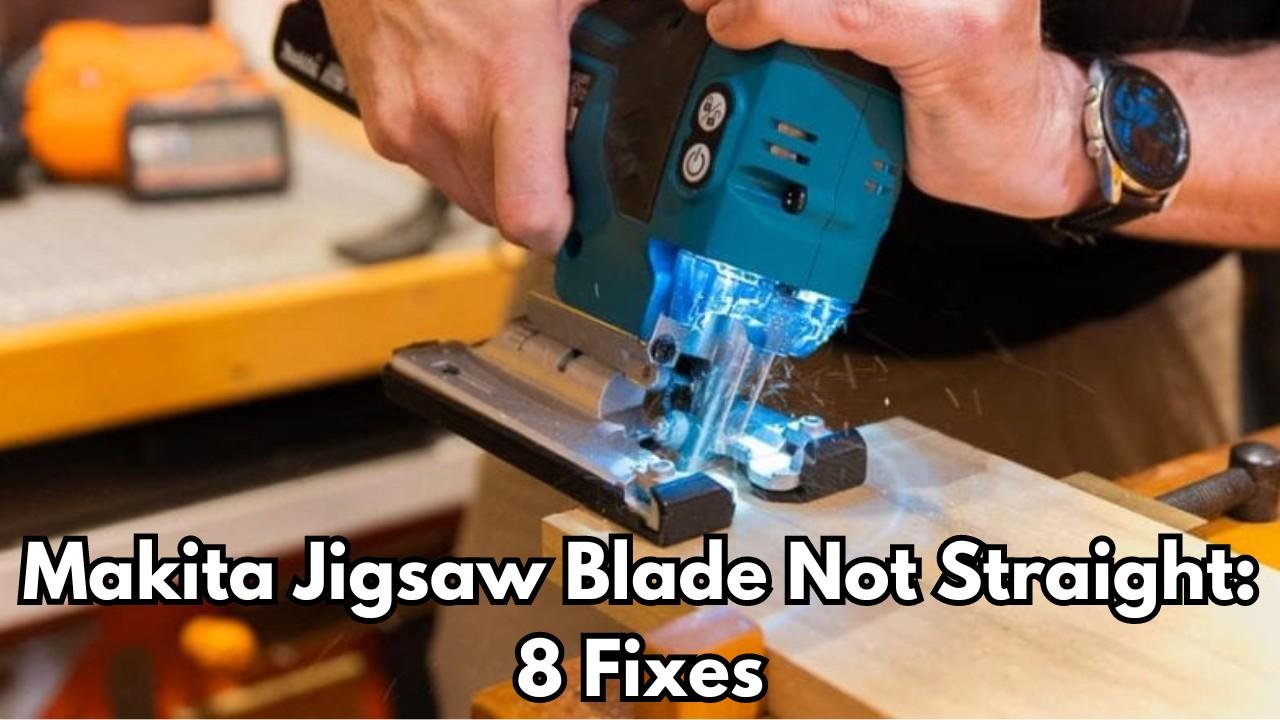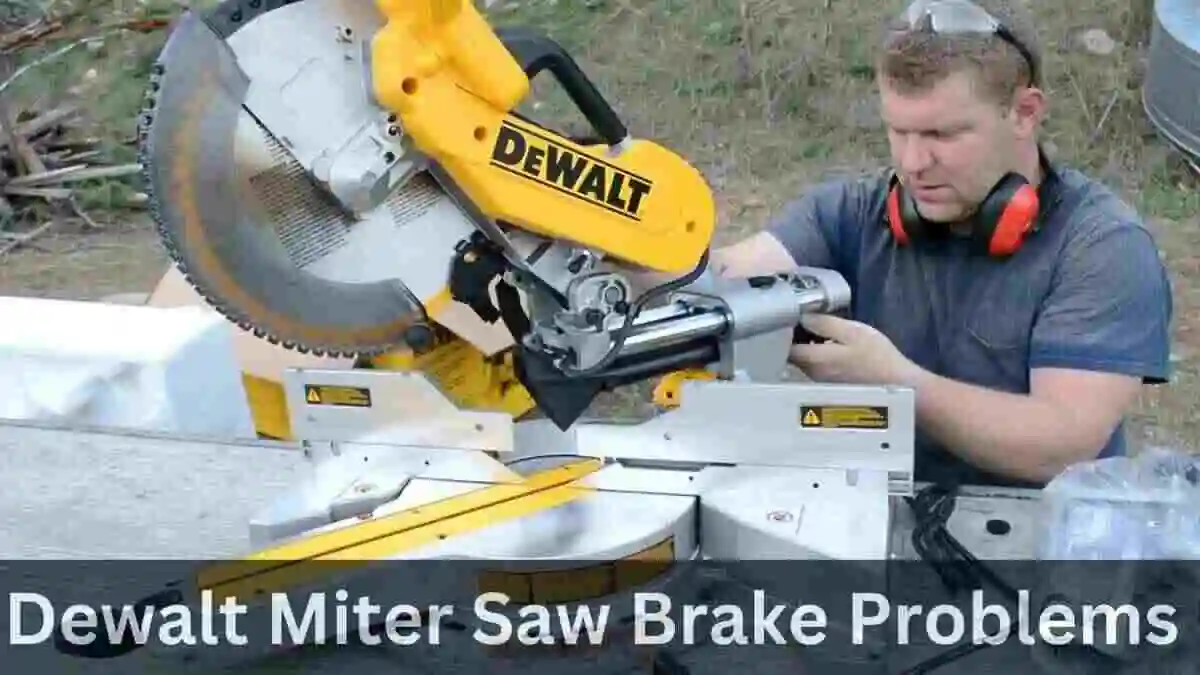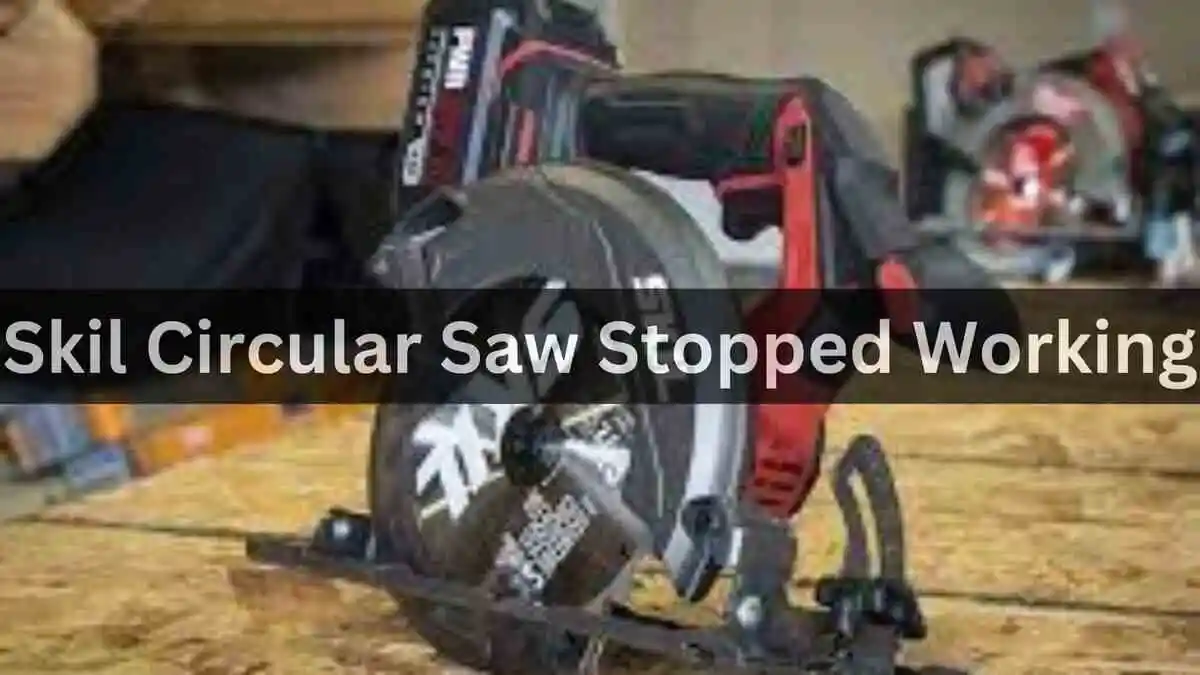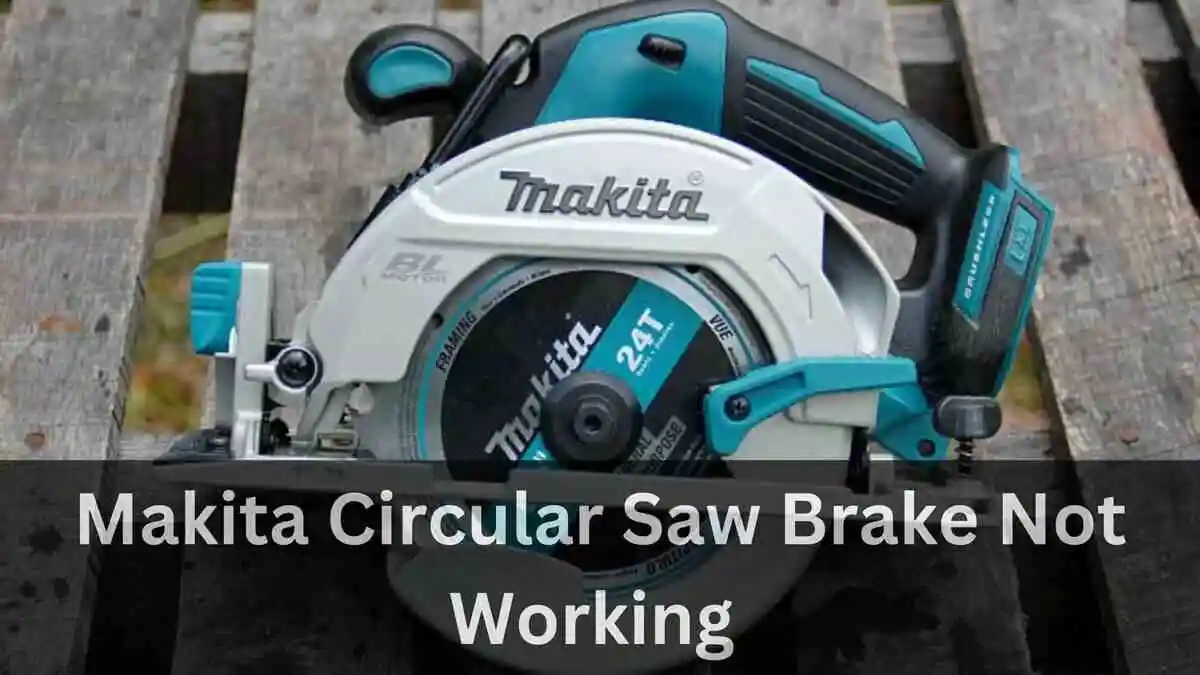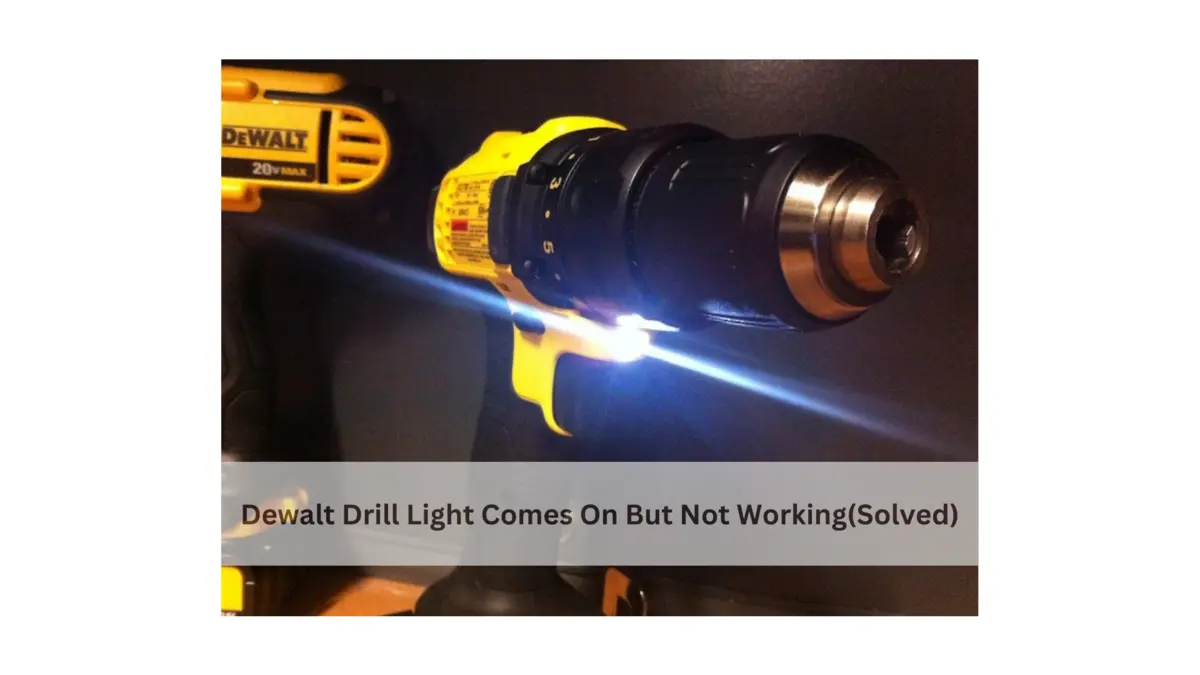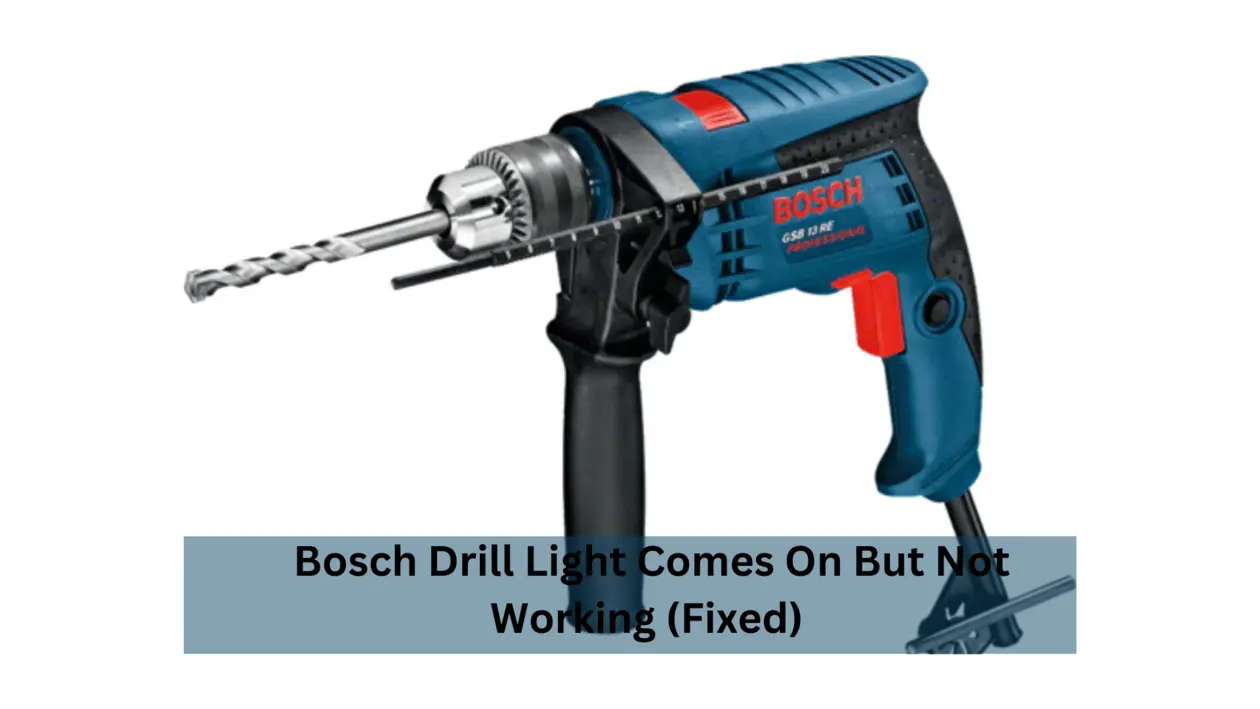Makita jigsaws are renowned for their precision and reliability in woodworking and construction tasks.
However, even the best tools can encounter issues, and one common problem users face is a jigsaw blade that is not straight.
When the blade deviates from its intended path, it can affect the quality and accuracy of cuts, leading to frustration and wasted materials.
Importance of a Straight Blade
A straight blade is crucial for achieving clean and precise cuts, whether you’re working on intricate designs or basic straight lines.
Any deviation can result in jagged edges, uneven surfaces, and compromised workmanship.
Therefore, understanding the causes behind a Makita jigsaw blade’s non-straightness is essential for maintaining efficiency and quality in your projects.
Makita Jigsaw Blades Not Being Straight: Causes And Solutions
Blade Misalignment:
One primary reason a blade is not straight is misalignment. This can occur due to improper installation or damage to the jigsaw’s blade holder.
Solution:
- Ensure that the blade is perfectly perpendicular to the jigsaw’s base plate (as shown in image). You can verify alignment using a square or straight edge.
- If the blade is not straight, loosen the blade clamp, adjust the blade’s position, and then tighten the clamp securely.
- Ensure the guide rollers or blade holder are aligned properly to prevent lateral movement while cutting.
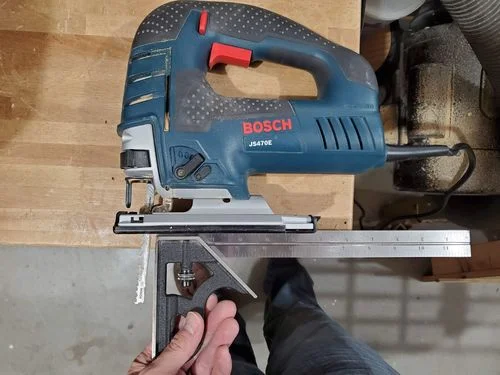
Blade Wear:
Over time, jigsaw blades can wear down, leading to irregularities in cutting. Dull or damaged teeth can cause the blade to wander off course during operation.
Solution: Regularly inspect your jigsaw blades for signs of wear, such as dull or damaged teeth, chipping, or bending. Worn blades can cause inaccuracies in cutting. Replace blades as soon as you notice any signs of wear to maintain optimal cutting performance. Keeping spare blades on hand is a good idea to minimize downtime during replacements.
Incorrect Blade Installation:
If the blade is not installed properly, it can wobble or tilt during use, leading to crooked cuts.
Solution:
- Follow the manufacturer’s instructions carefully when installing jigsaw blades.
- Ensure that the blade is inserted fully into the clamp and tightened securely to prevent wobbling or tilting during use.
- Double-check the installation to ensure the blade is seated evenly and securely in the jigsaw.
Base Tilt:
Sometimes, the jigsaw base may be tilted at an angle other than 90 degrees, meaning it needs to be aligned properly with the cutting surface.
This misalignment can cause the blade to deviate from its intended path during cutting, resulting in skewed or irregular cuts.
Solution:
- Check the jigsaw’s base for any tilt or misalignment, not at a 90-degree angle.
- Measure the angle and adjust the base accordingly.
- Use a spirit level to confirm alignment, then tighten all screws securely.
- Test the jigsaw on scrap material to ensure straight and accurate cuts.
This ensures proper alignment for precise cutting results.
Material Hardness:
Attempting to cut through materials that are too hard for the blade can cause it to deflect or bend, resulting in inaccurate cuts.
Solution:
- Experiment with different cutting speeds and pressures to find the optimal settings for your cutting material.
- Avoid applying excessive force or speed, which can cause the blade to deflect or wander off course.
- Slow down when cutting through denser materials to maintain control and accuracy.
Manufacturing Defects:
In rare cases, blades may have inherent defects such as uneven teeth or structural weaknesses, leading to erratic cutting behaviour.
Solution: Before using a blade, carefully inspect it for any signs of defects, such as irregular tooth spacing, missing or damaged teeth, or structural flaws. Also, check the blade for warping, bending, or other abnormalities affecting its straightness or cutting performance. Discard any blades showing defects and replace them with new, undamaged ones.
Regular Maintenance:
Keep your jigsaw blades clean and free from debris buildup to ensure smooth cutting action. Additionally, lubricate moving parts of the jigsaw regularly to reduce friction and wear on the blade and other components.
Periodically inspect the jigsaw itself for any signs of damage or wear, such as bent or worn guide rollers, and address any issues promptly.
Professional Assistance
If you encounter persistent issues with your Makita jigsaw blades needing to be straight despite attempting the above solutions, consider seeking professional assistance.
A qualified technician or service centre specializing in power tools can diagnose and address any underlying issues with your jigsaw.
They have the expertise and specialized tools to identify and rectify complex problems, ensuring optimal performance and cutting accuracy.
Feel free to reach out for professional help if needed to ensure the proper functioning of your jigsaw and the quality of your woodworking and construction projects.
Conclusion:
A Makita jigsaw blade that is not straight can hinder your woodworking and construction projects, leading to frustration and wasted time.
By understanding the causes behind this issue and implementing the appropriate solutions, you can ensure smooth and accurate cutting operations, resulting in high-quality craftsmanship and improved efficiency.
Frequently Asked Questions
Why is blade alignment important in a jigsaw?
Blade alignment ensures the cutting action remains precise and consistent, minimizing the risk of cut deviations and irregularities.
How often should I replace my jigsaw blades?
Blade replacement frequency depends on usage and the materials being cut. Inspect blades regularly and replace them when wear or damage is detected.
Can overheating affect jigsaw blade straightness?
Excessive heat buildup can cause blades to warp or lose their straightness, compromising cutting performance.
What should I do if my jigsaw blade keeps wandering off course?
Check for blade misalignment, worn teeth, or improper installation. Adjust settings and techniques as needed to ensure proper cutting alignment.
